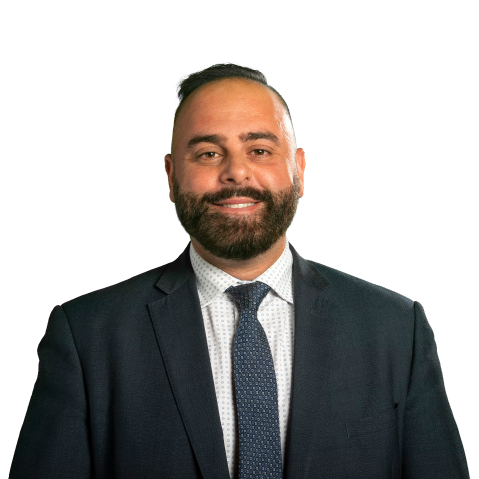When a stroke occurs, every minute counts. The difference between recovery and permanent impairment can often come down to timely, accurate treatment, or the failure of medical professionals to provide it. Stroke-related death, serious injury, or permanent impairment caused by medical negligence can be difficult to identify, especially when the signs of stroke negligence are overlooked.
If you’ve suffered physical or psychological damage due to misdiagnosis, delayed diagnosis, or any form of negligence, you may be entitled to a medical negligence claim and compensation.
In this blog, we’ll explore stroke negligence cases, identify key signs and symptoms of a stroke, and guide you through the process of filing a stroke-related medical negligence claim. Additionally, we’ll highlight how involving a lawyer can significantly improve your chances of a successful outcome.
What is stroke medical negligence?
Stroke medical negligence refers to a serious failure in medical duty that can drastically alter a patient’s life. It’s not just a legal term; it represents a critical lapse in care that can have devastating consequences. Medical negligence can stem from human error or intentional misconduct, commonly known as medical malpractice. It occurs when a patient suffers harm due to inadequate or incorrect treatment, whether by mistake or design.
Common forms of stroke medical negligence
In stroke cases, negligence manifests in various ways, including:
- Ignoring obvious stroke symptoms, like a sudden headache or weakness
- Failing to take vital signs or perform necessary assessments
- Overlooking a stroke as a potential cause of symptoms, particularly in at-risk patients (e.g., smokers, those with obesity, or patients with hypertension)
- Providing an incorrect diagnosis entirely
- Mistakes in the laboratory during testing
- Failing to consult appropriate specialists, such as neurologists
- Unacceptable delays in testing or diagnosing
- Neglecting to administer time-critical treatments like thrombolysis.
The impact of stroke in Australia
The statistics surrounding strokes in Australia are sobering. According to the Stroke Foundation, in 2023, there were 45,758 strokes, including 34,793 first-time occurrences. In 2022, the Australian Institute of Health and Welfare (AIHW) revealed that stroke was responsible for 8,400 deaths, making up 4.4% of all fatalities and 19% of deaths attributed to cardiovascular disease. These numbers represent more than just statistics. They highlight real lives that have been affected, some by missed diagnoses or delayed treatment, leading to life-altering consequences. The economic impact of strokes is equally staggering. In 2023, the estimated cost of strokes in Australia reached $9 billion, with lifetime costs surpassing $15 billion. This includes $5.5 billion in healthcare expenses, $6.3 billion in lost productivity, and $3.3 billion in unpaid care costs.
Signs of a stroke and risks of misdiagnosis
A stroke happens when the blood flow to your brain becomes blocked, depriving it of oxygen. This can happen as a result of high blood pressure or a blood clot serious enough to stop the flow of blood to the brain. If left untreated, the lack of blood flow can cause a serious and permanent brain injury.
Recognising stroke symptoms
The Stroke Foundation of Australia identifies these symptoms as potential signs of a stroke:
- Weakness, numbness or paralysis of the face, arm or leg on either one or both sides of the body
- Difficulty speaking
- Difficulty understanding things
- Dizziness, loss of balance or an unexplained fall
- Loss of vision, sudden blurring or decreased vision in one or both eyes
- Headache, usually severe and abrupt, or an unexplained change in the pattern of headaches
- Difficulty swallowing.
Because stroke symptoms are also common among other medical conditions, misdiagnosis can—and does—happen. This is particularly true for post-surgical strokes, which may be overlooked in the context of recovery, and recurrent strokes, where vigilance and ongoing care are crucial.
Key challenges in stroke diagnosis
In a 2018 entry in the Medical Journal of Australia, Ian Scott, the Director of Internal Medicine and Clinical Epidemiology at Princess Alexandra Hospital, shared some alarming statistics. He highlighted that Australia sees around 140,000 diagnostic errors each year. Even more concerning, nearly half of all malpractice claims against general practitioners are due to diagnostic mistakes.
Out of these 140,000 errors, about 21,000 lead to serious harm, with 2,000 to 4,000 resulting in death. While this data covers all types of diagnostic errors and is not limited to stroke cases, it underscores a troubling reality: misdiagnosis happens far more often than we might think.
This is why it’s so important to be aware of your rights if you’ve been affected by medical negligence.
Post-surgical strokes: An overlooked risk
Post-surgical strokes represent a significant area of concern in medical negligence cases.
A 2024 study by the Critical Care Research Group found that the risk of stroke varies depending on the type of surgery. For adults undergoing non-cardiac, non-neurological surgery, the risk ranges from 0.1% to 0.7%. This increases to 1% to 5% for patients undergoing cardiac surgery, and rises further to between 1% and 10% for neurological surgery. The risk is notably higher in older patients and those with pre-existing cardiovascular conditions. Importantly, strokes that occur after surgery tend to have a much worse prognosis compared to those that occur in the community. The 30-day mortality rate is twice as high, survivors face greater levels of disability, and their overall quality of life is significantly reduced.
These post-surgical strokes often occur due to:
- Blood pressure fluctuations during surgery
- Unmonitored atrial fibrillation
- Embolic events related to surgical procedures
- Inappropriate management of anticoagulant therapy.
What makes post-surgical strokes particularly concerning from a negligence perspective is that they occur in a controlled medical environment, where continuous monitoring and prompt intervention are expected. In such settings, medical professionals have a clear responsibility to identify high-risk patients and implement appropriate preventative measures. When this duty is neglected, the consequences can be severe, as timely intervention is crucial in minimising the impact of post-surgical strokes.
Recurrent stroke risk: The need for vigilant care
Accurate initial diagnosis and comprehensive follow-up care are essential to reducing the risk of stroke recurrence and improving long-term outcomes
Healthcare providers have a heightened responsibility to remain vigilant for signs of recurrence in patients who have already experienced a stroke. Failure to implement proper monitoring and prevention strategies after an initial stroke can lead to negligence, particularly when:
- Secondary prevention medications are not prescribed
- Follow-up appointments are not scheduled
- Patient education about warning signs is inadequate
- Risk factors are not properly managed.
According to the Stroke Foundation of Australia, approximately 25% of stroke survivors will experience another stroke within five years. When healthcare professionals neglect their duties in these areas, it can lead to preventable harm, further complications, and a diminished quality of life. If you or a loved one has been affected by such negligence, seeking legal advice can help ensure accountability and secure the compensation you deserve.
Medical risks of failing to diagnose or treat a stroke
A prompt diagnosis and timely treatment are crucial to minimising the physical and psychological impact of a stroke. Without quick intervention, survivors can face a range of temporary or permanent complications, which can drastically alter their lives.
Consequences of misdiagnosis or delayed treatment
When medical professionals fail to correctly diagnose a stroke, the consequences can be devastating and permanent. These may include:
- Paralysis or severe mobility limitations
- Loss of speech or language capabilities (aphasia)
- Difficulty thinking or concentrating
- Memory loss or cognitive impairment
- Emotional and psychological challenges, including depression
- Chronic pain and sensory disturbances
- Loss of autonomy and independence
- Need for lifelong care and assistance.
The severity of these outcomes is directly linked to the timeliness of treatment.
Research from the Royal Melbourne Hospital Stroke Unit indicates that for every 15-minute delay in treatment, there is a measurable decrease in positive outcomes. After 4.5 hours, the effectiveness of standard clot-busting treatments (thrombolytics) diminishes, making early diagnosis absolutely critical.
Thrombectomy and its impact on stroke treatment and litigation
Thrombectomy is one of the most significant advancements in stroke treatment in recent decades. Failing to consider or perform this procedure when necessary can be considered a serious case of medical negligence.
What is thrombectomy?
Thrombectomy is a minimally invasive procedure where specially trained interventional neuroradiologists use a catheter to physically remove a blood clot from an artery in the brain. Unlike thrombolytic medications that attempt to dissolve the clot, thrombectomy mechanically retrieves it, often using a stent retriever or aspiration device.
The critical time window
Traditional clot-busting medications, such as tissue plasminogen activator (tPA), must typically be administered within 4.5 hours of stroke onset. However, recent research has shown that thrombectomy can be effective up to 24 hours after symptoms begin, for carefully selected patients. This extended treatment window makes the failure to consider thrombectomy especially significant from a legal standpoint. The 2018 DEFUSE-3 and DAWN trials demonstrated that patients with specific imaging findings could benefit from thrombectomy even beyond the traditional treatment window, with some cases showing positive outcomes up to 52 hours after symptom onset.
Thrombectomy and its impact on medical negligence litigation
Past medical negligence cases in Australia have highlighted the significant legal implications of failing to offer or perform thrombectomy when indicated.
Common allegations in these cases have included:
- Failure to transfer patients to stroke centres equipped to perform thrombectomy
- Delays in obtaining the necessary imaging to determine thrombectomy eligibility
- Inadequate protocols for swiftly identifying patients who require thrombectomy
- Lack of staff training on thrombectomy indications and procedures
- Absence of systems to ensure timely thrombectomy when needed.
The Stroke Foundation’s Acute Stroke Services Framework 2019 now recommends that all hospitals implement protocols for the rapid identification of thrombectomy candidates and facilitate their transfer to suitable facilities. Past failures to follow these guidelines have provided strong evidence in negligence claims.
Establishing a stroke negligence case
Diagnosis-related issues form the foundation of many stroke malpractice cases in Australia.
Common failures in the diagnostic process include:
1. Misattribution of symptoms
Stroke symptoms being incorrectly attributed to migraine, intoxication, vertigo, or psychological issues, particularly in younger patients or those without obvious risk factors.
2. Failure to obtain a complete medical history
Not collecting information about risk factors such as previous transient ischaemic attacks (TIAs), hypertension, or family history of stroke.
3.Inadequate physical examination
Incomplete neurological examinations that miss subtle signs of neurological deficit.
4. Delayed imaging
Failure to order timely CT or MRI scans when stroke is a potential diagnosis.
5. Poor communication between healthcare providers
Lack of proper communication during shift changes or between departments, resulting in fragmented care.
The Australian Commission on Safety and Quality in Health Care has identified diagnostic error as a priority area for improvement, with stroke being one of the conditions most frequently affected by these errors.
The four key elements of proving medical negligence in stroke cases
To prove medical negligence or malpractice, you need to demonstrate the four key elements: duty of care, breach of duty, causation and damages.
1. Duty of care
Duty of care refers to the legal obligation of healthcare providers to maintain a standard of care that avoids harm to patients. In stroke cases, this duty is typically established once a doctor agrees to treat you or you are admitted to a hospital. Healthcare providers are legally bound to ensure that the care they provide meets established professional standards.
2. Breach of duty
To prove negligence, you must show that the healthcare provider breached their duty of care by failing to meet the required standard.
In stroke cases, this might involve demonstrating that:
- The practitioner failed to recognise obvious stroke symptoms
- Standard diagnostic tests were not ordered
- Appropriate treatments were not provided within the necessary timeframes
- The medical professional acted in a way that no reasonable practitioner would have in similar circumstances.
3. Causation
Proving causation is one of the most complex aspects of a negligence claim. You must show that the harm you sustained was a direct result of the breach of duty. For example, demonstrating that prompt diagnosis and treatment could have prevented permanent disability or reduced the severity of the stroke’s impact.
4. Damages
Finally, damages assess the extent of the harm or injury suffered. In stroke negligence cases, this includes evaluating the severity of any impairments or disabilities and how much of those can be attributed to the provider’s negligence.
The challenges of proving stroke negligence
Proving stroke negligence can be particularly difficult, especially for victims who are navigating the process on their own. One of the key challenges is that stroke symptoms often overlap with those of other serious medical conditions, which can complicate both diagnosis and the identification of negligence. In addition, strokes can vary greatly in severity, making it harder to establish clear links between a provider’s actions (or inactions) and the harm caused.
If you decide to pursue legal action, the process for filing a stroke misdiagnosis claim is similar to any other medical negligence claim. Misdiagnosis, delayed diagnosis, or failure to diagnose a stroke, particularly when these lapses result in injury, are considered forms of medical negligence and malpractice.
Given the complexity of stroke cases, it’s crucial to seek advice from a lawyer with experience in medical negligence. They can guide you through the process, ensuring that you gather the necessary evidence, meet procedural requirements, and present a strong case for the compensation you deserve. GMP Law operates on a No Win No Fee basis, so there is no financial risk in exploring your stroke negligence case.
Call us for confidential, free legal advice.
Proving stroke misdiagnosis: An example
Consider the hypothetical case of Emma, a 38-year-old marketing professional who experienced subtle symptoms of a stroke. This example illustrates the complex process of proving medical negligence.
Emma visited her local emergency department complaining of:
- Intermittent weakness on her left side
- Slight speech difficulties
- Occasional vision blurring.
The attending physician conducted a cursory examination and diagnosed her with stress and a migraine. Two weeks later, Emma suffered a major stroke, resulting in permanent left-side paralysis and speech impairment.
To prove medical negligence, her legal team would need to demonstrate:
- The doctor failed to conduct appropriate neurological assessments
- Standard medical protocols were not followed
- A competent medical professional would have recognised stroke risk factors
- The delay directly caused increased severity of her condition.
The role of expert evidence
Expert medical witnesses are the linchpin in stroke negligence cases.
These specialists, typically senior neurologists or stroke specialists, provide independent assessments that:
- Explain complex medical procedures and standards
- Identify specific breaches in medical care
- Demonstrate how alternative actions could have prevented harm.
In Emma’s case, expert witnesses would analyse medical records, diagnostic protocols, and compare the treatment received against established medical standards.
They might highlight specific failures, such as:
- Failure to conduct immediate CT or MRI scans
- Overlooking clear neurological warning signs
- Not consulting stroke specialists when symptoms were ambiguous.
Expert evidence serves multiple critical functions in stroke negligence cases:
| Function | Description |
|---|---|
|
Experts define what a reasonable medical professional would have done in similar circumstances, drawing on their clinical experience, medical literature, and accepted guidelines. |
|
By meticulously reviewing medical records, experts can pinpoint exactly where care deviated from acceptable standards. |
|
Perhaps most crucially, experts can explain the relationship between the negligent actions and the patient’s outcome, answering the essential question: “Would better care have resulted in a better outcome?” |
|
Medical experts help assess the full extent of injuries, forecast future medical needs, and evaluate permanent impairments. |
For example, a neurologist might testify that a patient presenting with sudden-onset facial drooping and arm weakness should have received an immediate CT scan and neurological consultation. They could then explain how the six-hour delay in diagnosis resulted in the patient missing the window for thrombolytic therapy, directly causing their permanent disabilities.
An experienced personal injury lawyer would be well-equipped to connect you with the right experts for your case, a crucial step in maximising the potential of your claim.
Recent GMP Law stroke negligence cases
| Case summary | Outcome | Negligence identified |
|---|---|---|
| Our client was taken to the hospital in an ambulance, where he was diagnosed with heat stroke and sent home. His symptoms persisted, and the following morning, while driving to see his GP with his children in the car, he suffered another stroke. | Successfully secured a settlement of $400,000 against a Sydney hospital. | The hospital staff failed to take an adequate medical history, perform a neurological examination, and investigate the client’s condition, significantly delaying diagnosis and treatment. |
| In July 2019, our client was rushed to the Emergency Department, presenting with hypotension following vomiting and diarrhoea. The medical team identified an upper gastrointestinal bleed resulting in haemorrhagic shock. | Settlement of $1,000,000 for our client, plus $150,000 each for the client’s husband and daughter for their nervous shock claims. | Long delay in addressing unstable blood pressure and treating a bleeding ulcer, resulting in a stroke. The client suffered loss of function in her left upper limb, significant decline in physical and cognitive abilities, and psychological consequences requiring ongoing care. |
Landmark Australian stroke negligence cases
| Case | Year | Significance |
|---|---|---|
| Usama v Western NSW Local Health District | 2023 | This case involves the approval of a settlement for a plaintiff who suffered a severe stroke shortly after giving birth, allegedly due to medical negligence. The plaintiff’s stroke was misdiagnosed as carpal tunnel syndrome, delaying the correct treatment that could have prevented the stroke’s severity. The case underscores the importance of accurate diagnosis and timely intervention in stroke treatment, and how failure in these areas can significantly impact litigation outcomes. The court has determined that the proposed settlement is in the plaintiff’s best interests, considering her serious injuries, future care needs, and potential reductions in life expectancy. |
| Hobson v Northern Sydney Local Health District | 2017 | This case highlights the significant risks associated with surgery for patients with complex conditions, such as Noonan Syndrome, who require careful intraoperative management to avoid complications like stroke or spinal injury. Hobson underwent a two-stage spinal surgery to address severe lordoscoliosis and associated respiratory issues. However, during the second stage in November 2009, complications arose due to hypotension and oxygenation issues while the patient was in a prone position. Despite these complications, the surgery proceeded and Hobson suffered a permanent spinal cord injury, resulting in paraplegia. The two doctors involved, an orthopaedic surgeon and an anaesthetist, were found negligent for failing to halt the surgery at an appropriate time when critical signs indicated a worsening condition. The lack of proper spinal cord monitoring and the administration of muscle relaxants further compromised the patient’s safety. Additionally, the surgery continued despite the presence of abnormal vital signs and inadequate ventilation, leading to irreversible damage. The case is significant in stroke and negligence cases because it underscores the importance of continuous and accurate monitoring, timely decision-making, and adapting surgical plans to the patient’s evolving condition. Especially when risks such as stroke or spinal injury are heightened during surgery. |
| Bassindale v Western Sydney Area Health Service | 2006 | The plaintiff argued that the hospital staff failed to recognise the risk of a stroke when they proceeded with surgery, despite signs that she might have had a heart attack (myocardial infarction). She claimed that if the staff had identified the heart attack, the surgery would have been delayed, potentially preventing the stroke. The court found that the hospital staff were negligent in proceeding with the surgery without properly addressing the heart attack and the associated stroke risk. The plaintiff was allowed to ask specific questions (interrogatories) to determine whether the staff knew or should have known about the heart attack and its potential to lead to a stroke. This confirmed that the staff did not take the necessary precautions. The case concluded that if the medical staff had acted on the signs of the heart attack, the stroke could likely have been prevented, and their failure to do so was deemed negligent. |
Stroke misdiagnosis compensation
Compensation for medical negligence claims are calculated on a case-by-case basis, as each person’s situation can vary. The reparations are meant to reimburse a patient for their injury, suffering or loss to get them reoriented and re-established after having received insufficient or negligent medical care or treatment. After a successful claim is made, compensation is paid by the insurer of the medical establishment where the negligence occurred.
What compensation typically covers
When pursuing compensation for stroke misdiagnosis or negligent treatment, various types of damages may be available:
Non-economic damages
These compensate for the human impact of negligence:
- Pain and suffering
- Loss of enjoyment of life
- Psychological trauma
- Disfigurement
- Loss of consortium (impact on relationships).
The value of these damages varies significantly based on individual circumstances, the severity of impairment, and the impact on quality of life. In Australia, each state has different approaches to capping non-economic damages, with New South Wales, for example, capping general damages (as of 2024) at $761,500 for the most severe injuries.
Economic damages
These compensate for financial losses:
- Past and future medical expenses
- Rehabilitation costs
- Home modifications
- Specialised equipment
- Lost earnings and superannuation
- Cost of care (professional or provided by family).
Exemplary damages
These compensate for financial losses:
- Past and future medical expenses
- Rehabilitation costs
- Home modifications
- Specialised equipment
- Lost earnings and superannuation
- Cost of care (professional or provided by family).
Unlike non-economic damages, economic damages are not typically capped in Australia and can exceed several million dollars in severe cases, particularly when the patient is young and requires lifelong care.
Special damages
While rare in Australian medical negligence cases, exemplary (or punitive) damages may be awarded in cases of gross negligence or wilful misconduct.
Find out how much you can claim today.
When to contact a lawyer for legal guidance
Timing is crucial when considering a medical negligence claim. You should contact a lawyer specialising in medical negligence as soon as possible if:
1. You've experienced a poor outcome following stroke symptoms
Even if you’re unsure whether negligence occurred, a specialist lawyer can review your case and advise accordingly.
2. You've received a second medical opinion suggesting errors in your care
This can be a strong indicator that standards of care were not met.
3. Medical records show inconsistencies or gaps in care
These can be red flags that warrant further investigation.
4. You notice significant delays in diagnosis or treatment
Given the time-critical nature of stroke treatment, delays can be particularly significant.
5. You've been offered a settlement by a healthcare provider or insurer
Never accept a settlement without independent legal advice.
Most medical negligence lawyers (including GMP Law) offer initial consultations at no cost, allowing you to understand your options without financial commitment.
Remember that strict time limits apply to medical negligence claims in Australia:
- Generally, you have three years from the date of negligence (or from when the negligence was discovered)
- In some cases involving children or those with cognitive impairment, these time limits may be extended.
Timeframes and legal considerations
Stroke negligence claims in Australia typically follow a complex legal journey that could take two to four years:
| Step | Details | Timeframe |
|---|---|---|
|
This phase involves gathering medical records, obtaining expert opinions, and determining the viability of a claim. | Three to six months |
|
Comprehensive medical reports and expert witness statements are compiled to establish negligence and causation. | Six to 12 months |
|
Most cases are resolved through negotiation rather than proceeding to court, with settlement discussions often beginning after evidence is exchanged. | 12 to 24 months |
|
If settlement cannot be reached, formal court proceedings may be necessary, though many cases settle during this process before reaching trial. | 12 to 18 months |
| Total timeframe | Two to four years from initial claim to resolution | |
Disclaimer: The lengthy process highlights the need for thorough documentation and experienced legal representation. Please note that every case is unique, and both the settlement amount and the timeline may vary depending on the specifics of your matter. Your lawyer will be able to provide tailored advice based on your individual circumstances.
 Written by: Ray Abbas
Written by: Ray Abbas 





